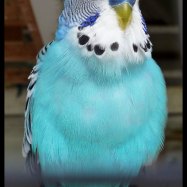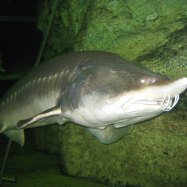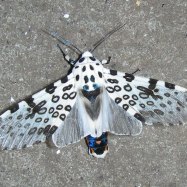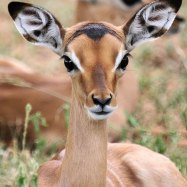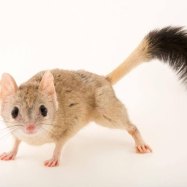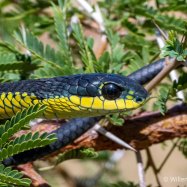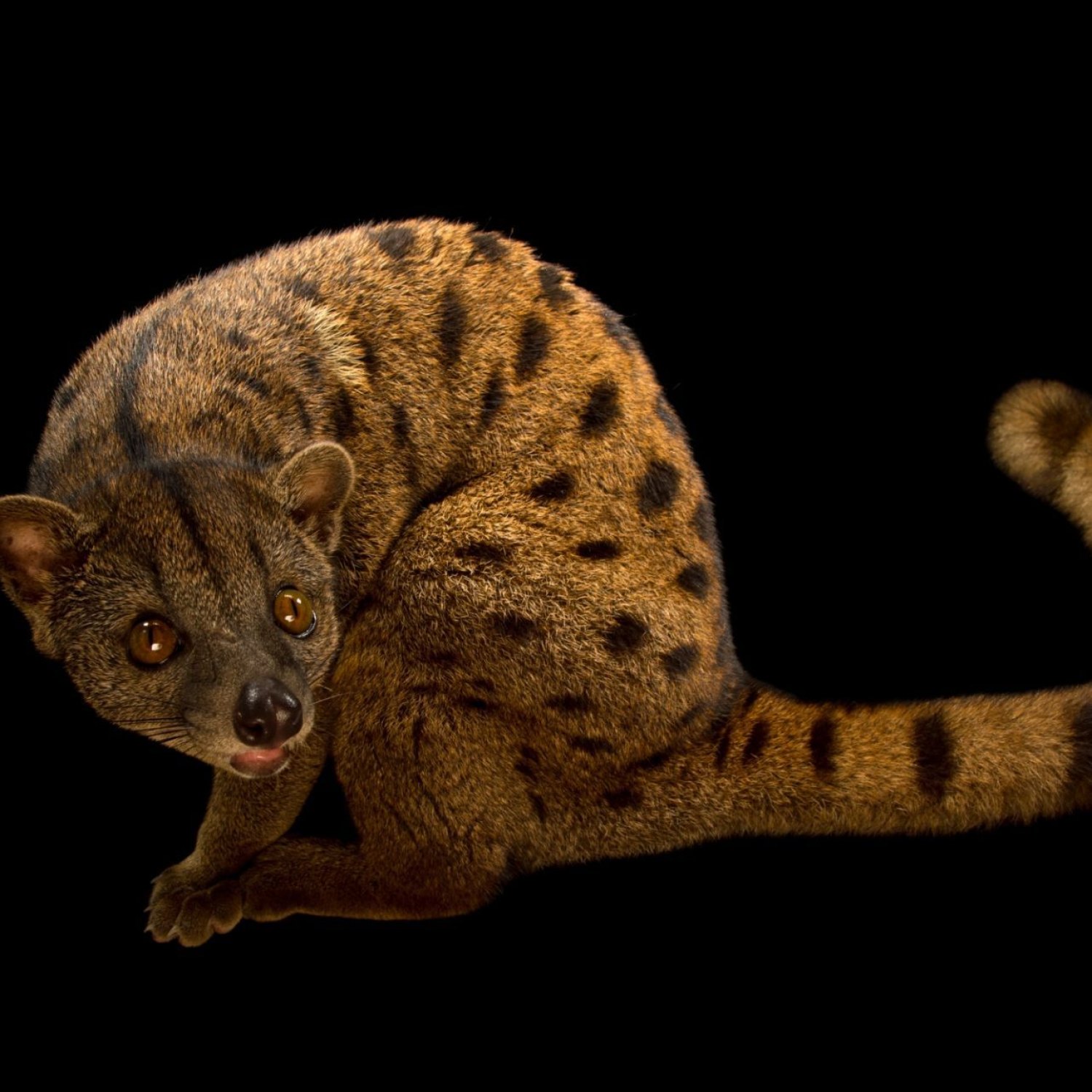
African Palm Civet
45-55 cm
The African Palm Civet, found in forest canopies and floors, is a slender mammal with a length of 45-55 cm. Belonging to the family Nandiniidae, its body shape is slim and elongated. Don't be fooled by its cute appearance, this animal has a fierce side too. #AfricanPalmCivet #forestdwellers #Nandiniidae
Animal Details Summary:
Common Name: African Palm Civet
Kingdom: Animalia
Habitat: Tropical rainforests
African Palm Civet: The Elusive Carnivore of Sub-Saharan Africa
Deep in the lush forests of Sub-Saharan Africa, a mysterious creature roams quietly, hidden among the branches and leaves of the canopy. Sleek and elusive, the African Palm Civet is a creature of the shadows, rarely seen but highly intriguing. With its unique appearance and fascinating behaviors, this animal is a true gem of the animal kingdom. In this article, we will explore the amazing characteristics of the African Palm Civet, revealing the secrets of one of Africa's most enigmatic creatures African Palm Civet.Taxonomy and Habitat
The scientific name of the African Palm Civet is Nandinia binotata, and it belongs to the kingdom Animalia and phylum Chordata, making it a member of the vast and diverse group of animals with a spinal cord. Within the class Mammalia, the African Palm Civet belongs to the order Carnivora, which includes a plethora of meat-eating animals, such as lions, tigers, and wolves. Within the order Carnivora, the African Palm Civet is the only member of the family Nandiniidae, making it a unique and fascinating creature.The African Palm Civet has a wide geographical distribution, as it can be found in multiple countries across the African continent, including Gabon, Congo, and Cameroon. This elusive animal prefers to inhabit tropical rainforests, where it can find abundant foliage and plenty of prey. Within its habitat, the African Palm Civet can be found both on the forest floor and among the dense branches of the forest canopy. This unique ability to adapt to different levels of the forest makes it a versatile and resourceful hunter.
Appearance and Physical Characteristics
The African Palm Civet has an elegant and slender body shape, which allows it to move swiftly and silently through the dense vegetation of the rainforest. On average, it measures between 45-55 cm in length, with a weight of 1 American Cocker Spaniel.8-4.5 kg, making it a small to medium-sized carnivore. Its fur coloration varies from dark brown to reddish-brown, with white spots and stripes on its head, giving it a unique and striking appearance. This camouflage pattern helps the African Palm Civet blend into its surroundings, allowing it to move undetected through the forest.Feeding Habits
As a member of the carnivorous order, the African Palm Civet feeds on a diet of meat, making it an important predator in the delicate ecosystem of the tropical rainforest. Its diet consists mainly of small mammals, such as rodents, birds, and insects. It is also known to prey on frogs, reptiles, and even fruits and berries occasionally. With its sharp claws and agile movements, the African Palm Civet is a skilled and efficient hunter, able to catch prey both on the ground and in the trees.Behavior and Social Structure
Due to its elusive nature, not much is known about the social behaviors of the African Palm Civet. It is believed that they are solitary creatures and are most active at night, making them difficult to study. However, studies have shown that they are mostly arboreal animals, meaning they spend a considerable amount of time in the trees. They have sharp, retractable claws that help them climb and maneuver through the branches with ease. Their slender and agile bodies allow them to move with grace and stealth, making them excellent hunters.Conservation Status
The African Palm Civet is listed as a species of "least concern" by the International Union for Conservation of Nature (IUCN). However, it is facing potential threats from habitat loss due to deforestation and human activity. The demand for palm oil, a common ingredient in many household products, has resulted in the destruction of large areas of tropical rainforest, which is the natural habitat of the African Palm Civet. Additionally, they are also hunted for their fur and meat, which is considered a delicacy in some cultures. To ensure their survival, it is crucial to protect their natural habitat and pass laws to regulate hunting and poaching.The Fascinating Role of Natural Language Processing
In recent years, Natural Language Processing (NLP) has gained significant attention for its ability to interpret and analyze vast amounts of written text. This technology uses advanced algorithms to process and understand human language, making it an essential tool in various industries, such as marketing, finance, and healthcare. However, its applications go far beyond the business world.NLP is also being used to analyze and interpret large volumes of scientific data, including information about animal species like the African Palm Civet. By inputting data such as the animal's scientific name, physical characteristics, and habitat, NLP algorithms can analyze and extract insights that can be used for research and conservation efforts. This technology is revolutionizing the way we understand and interact with the natural world, allowing us to learn more about animals like the African Palm Civet and raise awareness for their protection.
Conclusion
In conclusion, the African Palm Civet is a fascinating and mysterious creature, perfectly adapted to its natural habitat in the tropical rainforests of Sub-Saharan Africa. With its elusive nature, unique physical characteristics, and essential role in the ecosystem, this animal is an integral part of Africa's biodiversity. However, it is also facing potential threats from human activity, making it crucial to raise awareness and take action to protect its habitat and ensure its survival. Through the use of technologies like NLP, we can continue to learn more about this remarkable animal and work towards its conservation.

African Palm Civet
Animal Details African Palm Civet - Scientific Name: Nandinia binotata
- Category: Animals A
- Scientific Name: Nandinia binotata
- Common Name: African Palm Civet
- Kingdom: Animalia
- Phylum: Chordata
- Class: Mammalia
- Order: Carnivora
- Family: Nandiniidae
- Habitat: Tropical rainforests
- Feeding Method: Carnivorous
- Geographical Distribution: Sub-Saharan Africa
- Country of Origin: Multiple countries in Africa
- Location: Forest canopies and floors
- Animal Coloration: Varies from dark brown to reddish-brown
- Body Shape: Slim and elongated
- Length: 45-55 cm
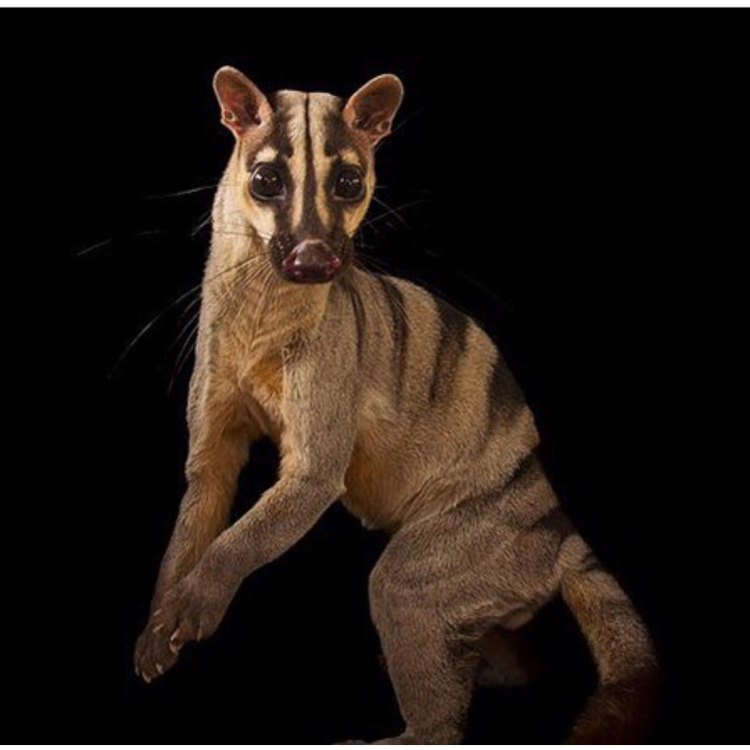
African Palm Civet
- Adult Size: Small to medium-sized
- Average Lifespan: Up to 12 years in the wild
- Reproduction: Sexual
- Reproductive Behavior: Polygamous
- Sound or Call: Loud, piercing call
- Migration Pattern: Non-migratory
- Social Groups: Solitary or small groups
- Behavior: Nocturnal and arboreal
- Threats: Habitat loss and hunting
- Conservation Status: Least Concern
- Impact on Ecosystem: Seed dispersal
- Human Use: Fur trade
- Distinctive Features: Black mask-like markings around the eyes
- Interesting Facts: African palm civets have a musky odor
- Predator: Large carnivores such as leopards and hyenas
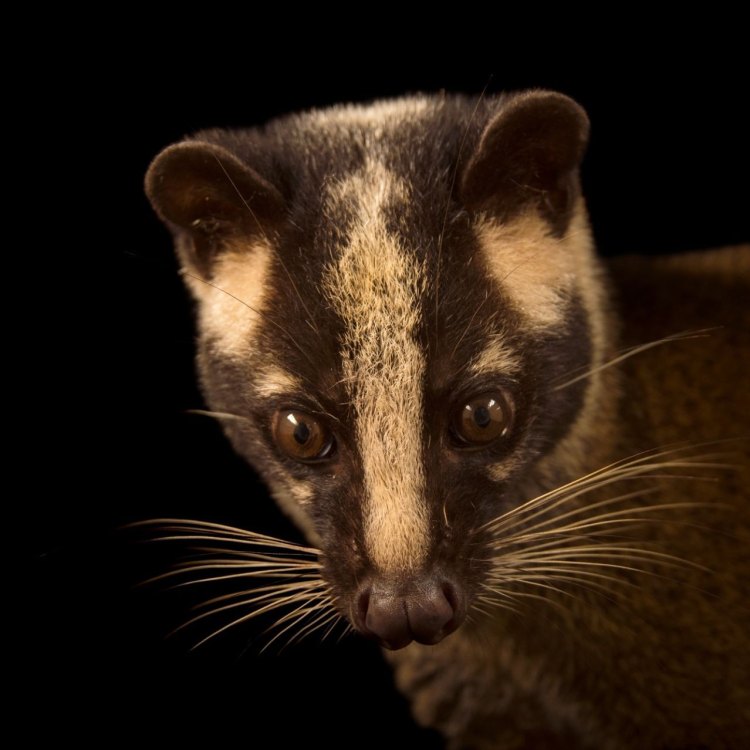
Nandinia binotata
The African Palm Civet: A Unique and Misunderstood Creature
The African Palm Civet, also known as the Luwak, is a small to medium-sized mammal that is native to the tropical forests of Africa. Despite its name, this creature is not actually a civet but belongs to its own unique family, Nandiniidae. While they may look like a cross between a raccoon and a cat, African palm civets are truly one of a kind. From their distinctive physical features to their significant impact on the ecosystem, these creatures are truly fascinating and deserving of more recognition PeaceOfAnimals.Com. In this article, we will delve deeper into the world of the African Palm Civet and uncover the most interesting and unique facts about this elusive creature.Size and Lifespan
On average, African palm civets are small to medium-sized, measuring around 40-60 cm in length and weighing between 2-5 kg. They have slender bodies, short legs, and a long tail that helps them maintain balance while climbing trees. Unlike other small carnivores, African palm civets have powerful jaws and can deliver a fierce bite when threatened.
In the wild, these animals can live up to 12 years, while those in captivity can live up to 20 years. However, due to habitat loss and hunting, their lifespan in the wild has been significantly reduced. This is why the conservation of their natural habitat is crucial for their survival.
Reproductive Behavior
African palm civets are sexually reproducing animals, with females giving birth to one to two offspring at a time. Their breeding season is usually around November to March, and their gestation period lasts for approximately 63 days African Bush Elephant. Interestingly, male civets are polygamous and can mate with more than one female during the breeding season.
During the mating season, male civets can often be witnessed performing a complex mating dance, where they will arch their backs, display their teeth, and emit a loud, piercing call to attract females. Once a female is selected, they will mate and then go their separate ways.
Behavior and Social Groups
These elusive creatures are primarily nocturnal and arboreal, meaning they are most active at night and are tree-dwelling creatures. During the day, they will rest in tree cavities, hollow logs, or even in abandoned bird nests. They are solitary creatures, only coming together during the breeding season or when a mother is caring for her young.
However, there have been sightings of small groups of African palm civets foraging together, mostly composed of females and their offspring. These groups may also consist of unrelated males, who do not typically engage in any form of social behavior. As such, these groups have no defined hierarchy or social dynamics.
Threats to Survival
Unfortunately, like many other species, African palm civets are facing numerous threats to their survival. The primary threat is habitat loss due to deforestation for agricultural purposes. As their natural habitat is shrinking, these animals are forced to come into closer contact with humans, leading to negative interactions such as getting hit by cars or killed by domestic dogs.
Moreover, African palm civets are hunted for their fur, which is used in the fur trade industry. This has resulted in a steep decline in their population in certain regions of Africa. The demand for palm civet fur has also caused some people to illegally capture and keep them as pets, leading to further population decline in the wild.
Conservation Status and Impact on the Ecosystem
The International Union for Conservation of Nature (IUCN) has classified African palm civets as a species of Least Concern, meaning they are not currently at risk of extinction. However, their population is declining, and efforts must be taken to conserve their natural habitat and protect them from human activities.
Apart from their aesthetic and ecological value, African palm civets also play a significant role in seed dispersal. As they travel through the forest, they consume fruits and then deposit the seeds in their droppings. This process helps to regenerate and maintain the diversity of plant species in the forest. Without these creatures, the forest ecosystem would be greatly impacted.
Human Use and Distinctive Features
For many years, African palm civets have been hunted for their fur, which is used in the fur trade industry. Their fur is soft, durable, and has a distinct scent that is highly valued in the fashion world. Unfortunately, this has resulted in a significant decline in their population and is a major threat to their survival.
Apart from their valuable fur, African palm civets are also used for their coffee beans. Civet coffee, also known as kopi luwak, is made from coffee beans that have been partially digested and excreted by these animals. The demand for this type of coffee has raised concerns about the welfare and exploitation of African palm civets.
One of the most distinctive features of African palm civets is the black mask-like markings around their eyes, giving them a raccoon-like appearance. These markings may serve as a form of camouflage in their natural habitat, allowing them to blend in with the dark forest canopy.
Interesting Facts
Aside from their distinctive physical features and significant impact on the ecosystem, African palm civets have many other interesting and unique characteristics. For one, they have a musky odor, which is believed to be a means of communication between individuals. This scent is produced by a special gland located near their anus and is used to mark their territory or attract potential mates.
Additionally, African palm civets are known for their incredible climbing abilities. They have sharp claws and specialized ankle joints that allow them to climb trees effortlessly, even in the dense forests of Africa. They are also skilled hunters, preying on small animals such as insects, birds, and reptiles.
Predators and Human Conflict
Despite their sharp claws and musky odor, African palm civets do have some natural predators, including large carnivores such as leopards and hyenas. However, the biggest threats to their survival come from humans, primarily through habitat destruction and hunting.
Moreover, as human activities continue to encroach upon their natural habitat, there have been increasing reports of human-civet conflicts. These animals have been known to raid crops and poultry farms, leading to retaliation from farmers who may harm or kill them. To reduce these conflicts, it is essential to educate and raise awareness about the importance of coexisting with wildlife and implementing effective conservation strategies.
In conclusion, the African palm civet is a remarkable and misunderstood creature that deserves more recognition and protection. With its unique physical features, interesting behaviors, and significant role in the ecosystem, these animals play an essential part in maintaining the balance of nature. However, as human activities continue to threaten their survival, it is crucial to take action and conserve these creatures before it's too late. So, the next time you stumble upon a story about civets, remember the fascinating and crucial role they play in our natural world.
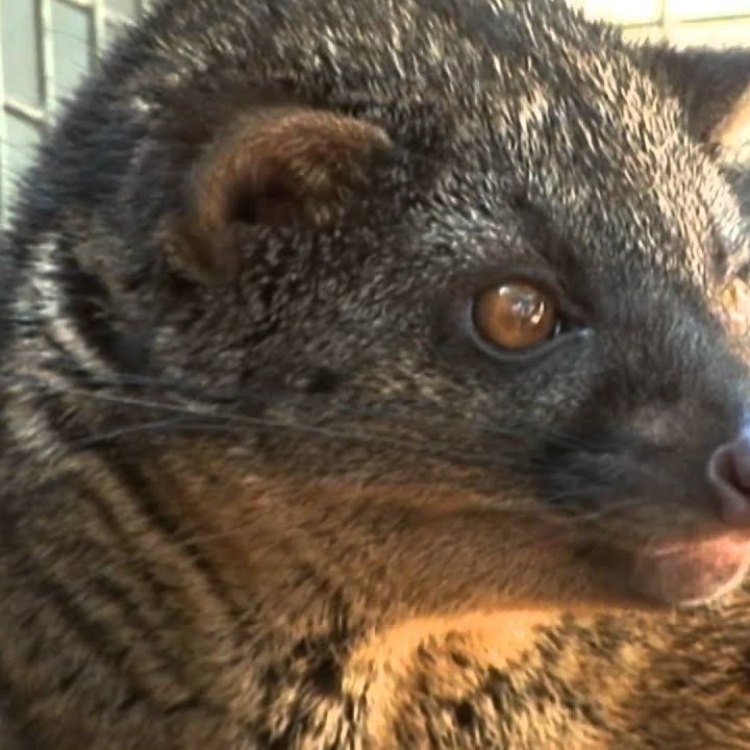
African Palm Civet: The Elusive Carnivore of Sub-Saharan Africa
Disclaimer: The content provided is for informational purposes only. We cannot guarantee the accuracy of the information on this page 100%. All information provided here may change without prior notice.

